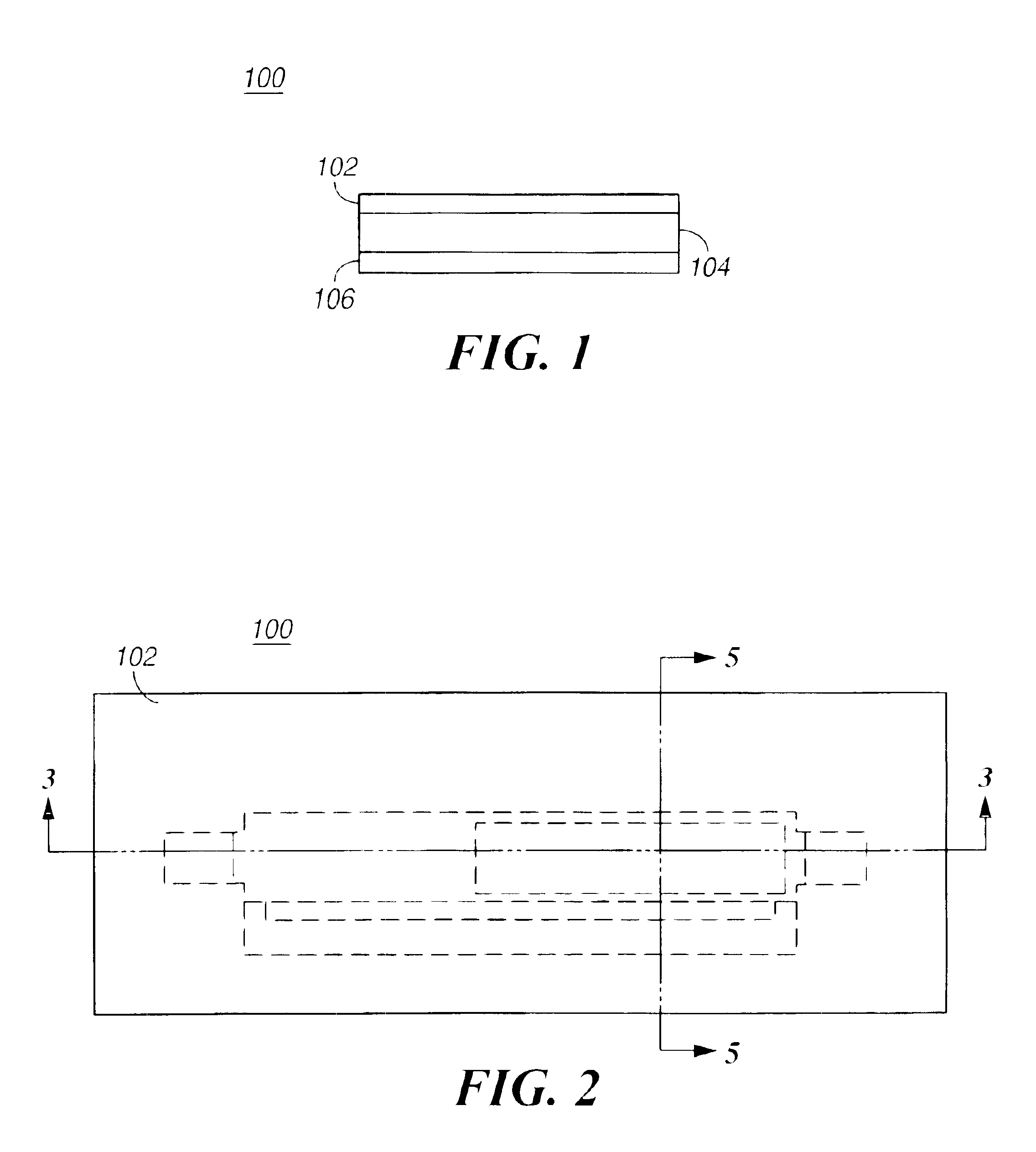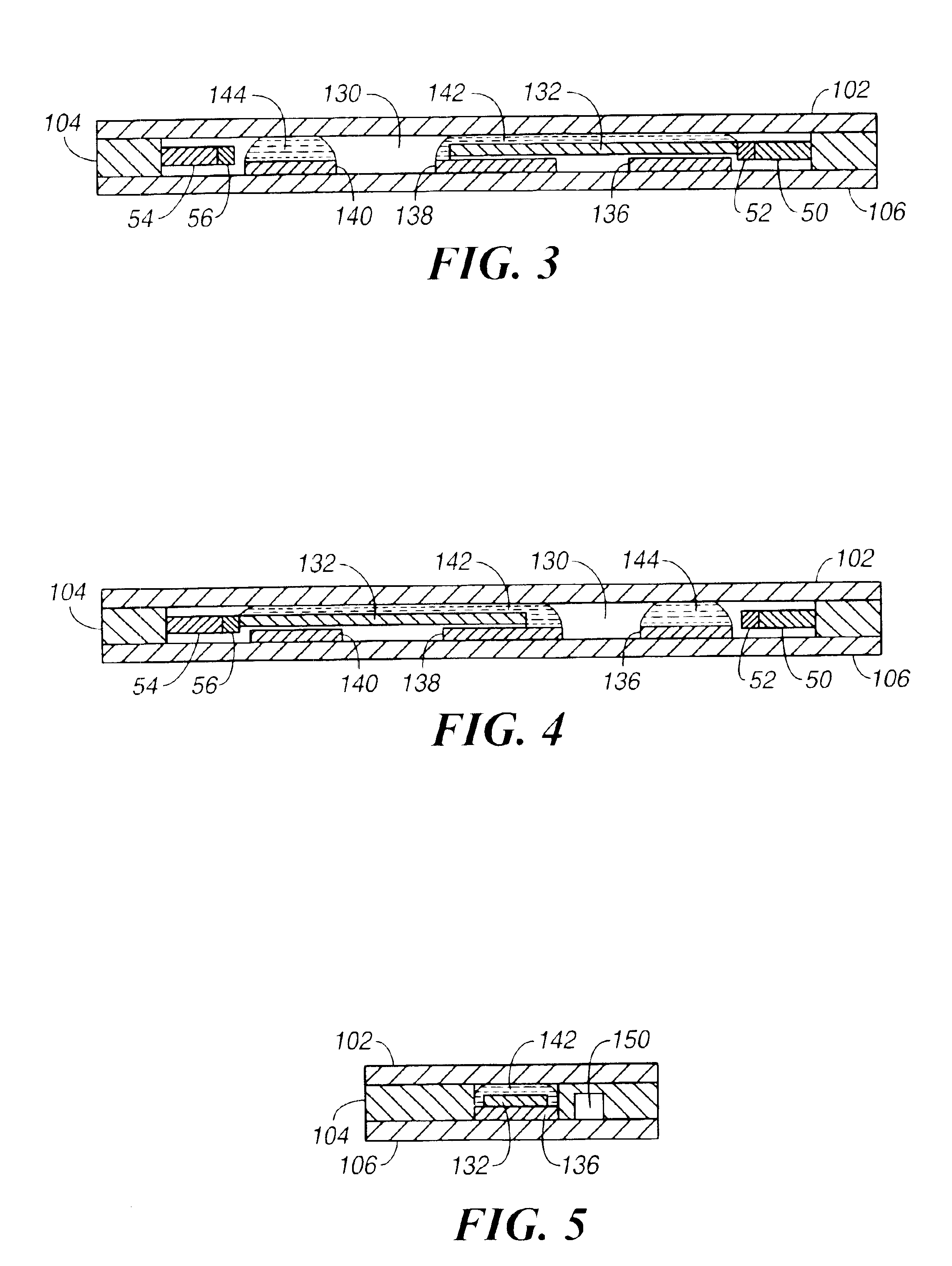Damped longitudinal mode latching relay
a relay and longitudinal mode technology, applied in relays, generators/motors, contacts, etc., can solve the problems of solid contact relays, contact damage, and degraded conductivity, and achieve the effect of preventing damag
- Summary
- Abstract
- Description
- Claims
- Application Information
AI Technical Summary
Benefits of technology
Problems solved by technology
Method used
Image
Examples
first embodiment
In order to prevent the brittle piezoelectric elements from breaking when the switching slug arrives at its new locations during switching, energy dissipative elements are used to lessen the impact forces. In the invention, shown in FIG. 3 and FIG. 4, compliant, energy absorptive faces 52 and 56 are used on the piezoelectric elements 50 and 54, respectively. Materials such as “Sorbothane” are effective at absorbing shock and vibration. An alternative embodiment is described below with reference to FIG. 6.
FIG. 5 is a sectional view of the relay through the section 5—5 shown in FIG. 2. The solid slug 132 rests on the contact pad 136 and is held in position by surface tension of the conducting liquid 142. A pressure relief passage 150 is coupled to the ends of the switching channel and allows fluid to flow from one end of the switching channel to the other.
second embodiment
FIG. 6 is a top view of the switching layer 104 of the relay. A pressure relief channel 150 is coupled to the ends of the switching channel 130 by vent holes 152 and 154. The pressure relief channel 150 allows pressure variations in the switching channel, due to movement of the solid slug 132, to be equalized by allowing fluid to flow from one end of the switching channel to the other through the vent holes. When the actuator 50 pushes the slug 132 to actuate it, the actuator face pushes the slug to the level of the vent opening 152, relieving any vacuum between the actuator face and the end of the slug that would tend to hold the slug back. The slug preferably has shaped ends that are just wide enough to fit into the recesses in which actuators 50&54 reside. In the embodiment shown in FIG. 6, the energy absorptive faces 52 and 56 are absent and the switching channel is narrowed near the piezoelectric actuators so there is little clearance between the channel walls and the portion o...
PUM
 Login to View More
Login to View More Abstract
Description
Claims
Application Information
 Login to View More
Login to View More - R&D
- Intellectual Property
- Life Sciences
- Materials
- Tech Scout
- Unparalleled Data Quality
- Higher Quality Content
- 60% Fewer Hallucinations
Browse by: Latest US Patents, China's latest patents, Technical Efficacy Thesaurus, Application Domain, Technology Topic, Popular Technical Reports.
© 2025 PatSnap. All rights reserved.Legal|Privacy policy|Modern Slavery Act Transparency Statement|Sitemap|About US| Contact US: help@patsnap.com



